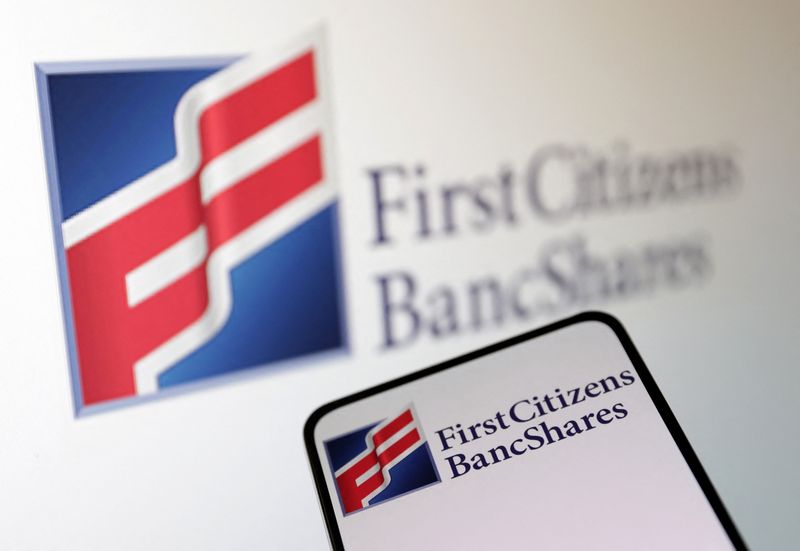(Reuters) - First Citizens BancShares Inc, a regional bank that has built a reputation of buying troubled rivals, is in the spotlight after it agreed to buy failed Silicon Valley Bank.
The deal comes after several attempts to sell the bank by the U.S. Federal Deposit Insurance Corporation did not succeed. First Citizens had reportedly been an early suitor of the collapsed startup-focused lender.
First Citizens shares soared on the news of the deal, surging 50%.
Here are some facts about the bank:
* Raleigh, North Carolina-based First Citizens has bought a slew of failed rivals seized by regulators through government-assisted deals since 2009, according to the Federal Deposit Insurance Corporation's website. They include:
Bank Closing date
Silicon Valley Bank March 10, 2023
Guaranty Bank May 5, 2017
Harvest Community Bank January 13, 2017
First CornerStone Bank May 6, 2016
North Milwaukee State Bank March 11, 2016
Capitol City Bank & Trust Company February 13, 2015
Citizens First National Bank November 2, 2012
Colorado Capital Bank July 8, 2011
Atlantic Bank and Trust June 3, 2011
United Western Bank January 21, 2011
Williamsburg First National Bank July 23, 2010
First Lowndes Bank March 19, 2010
Sun American Bank March 5, 2010
First Regional Bank September 25, 2009
Venture Bank September 11, 2009
Temecula Valley Bank July 17, 2009
* First Citizens is the 30th largest bank in the United States by assets as of Dec. 31, with over $100 billion in consolidated assets, according to data from the U.S. Federal Reserve.
* The bank, which currently has a market capitalization of about $8.4 billion, has seen its stock surge roughly 281% since 2009 as of its closing price on March 24.
* The lender's long-time CEO Frank Holding Jr. has served in his current role since January 2008 and was elected the bank's chairman in February 2009.
* In 2020, it bought peer CIT Group (NYSE:CIT) Inc in a deal valued at $2.2 billion, making it a bigger regional player in the United States. The deal closed last year.

* First Citizens was founded in 1898 as the Bank of Smithfield with just $10,000 of capital. It now operates a network of more than 500 branches in 21 states.
* In the 1970s, the lender opened branches across North Carolina and by 1974, it had surpassed $1 billion in assets and moved its headquarters from Smithfield to Raleigh.